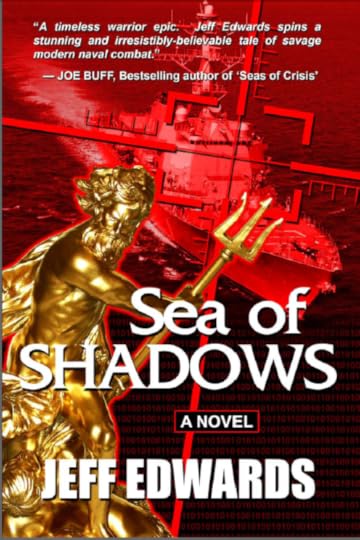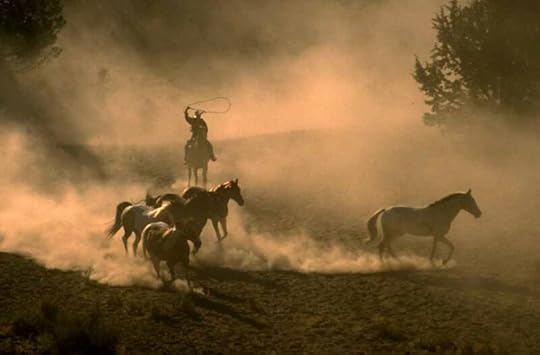Jacqui Murray's Blog, page 208
July 15, 2011
How to Describe Vehicles
If you're character is crossing a street, driving to work, waiting for a visitor, you'll devote a few words to the vehicle that's making this activity happen. It might be a car, a train, plane–whatever. My collection is brief, but rich. As usual, they are from the books I read, so use them for inspiration, not verbatim. I hope you add some of your own ideas in the comments:
Cars

How would you describe this car?
After too short a ride
Spotless red Jeep glittering in the fluorescent light
Could drive across the entire continent never seeing farther than the beams of your headlights.
Listened to the engine tick
Three-year-old Camaro, a rally-red Z28
Joe weaved between cars
Flash-flooded highway—cars got stranded in foot-deep lakes
The Honda juddered up and over the obstruction.
A dark green Land Rover, the Defender model, all kitted out in brush bars, searchlights, and a siren mounted on the bonnet.
the car behind him honked once more. He would go take the driver out, but then his wallet was back…
Drew a bead on the car
An older low-slung Impala came toward him
Older white panel van
Pimped black Escalade
Two Accords with fat tires and stingers
Pulled off and found a place to park and wait awhile for the radiator to cool before he put in some fresh fluid from the trunk
The rain came steady and cold against the windshield and rattled on the roof of the car
Car with a funny bumper sticker
Unfurled from her car like a boxer entering the ring
Expensive cars: Maybach Landaulets, Bulgatti Veyrons, SSC Ultimate Aero, Leblanc Mirabeau, Pagani Zonda Cinque Roadster, Lamborghini Reventon, Koenigsegg CCXR
Bikes
Junking his bike from side to side
Trucks

Does your POV character drive this truck?
As it churned slowly past
Huge tires howled
The scream of stressed rubber dying away, thin drifts of moving blue smoke following it
Nothing to hear but the Malibu's patient idle. Nothing to see but four high beams stabbing the far shoulder. The air was full of the smell of burned rubber and hot brakes and gas and oil.
Big rigs thundered down the highway and he could feel their vibrations in his chest
Sticky-smell of burned transmission fluid, spoiled fruit and bubble gum.
Traffic
white cones of headlamps
the headlights made the wet highway shimmer
traffic was faintly visible thru the door
battered 67 Ford Fairlane
Headlights flicked a couple of times
Windshield wipers barely keeping up with the cold, hard rain.
Kept the car at a steady sixty. Power line poles flashed past, the tires sang, the motor hummed.
throttled around the corner
Rainswept morning rush hour, bumper to bumper
Streets glistened and the cars had their lights on even though it was well after sunrise.
cut a few blocks inland
Airborne

Nothing like a chopper to spark up a plot
Bird (for helo)
Trotted through the gale of the blades, overcoat lifting, tie flapping back across his shoulder
Miscellaneous
sheet metal buckling around him
Boats
fouled her rails
one of the water shuttle boats from Rowe's Wharf was trudging toward the airport
Jacqui Murray is the editor of a technology curriculum for K-fifth grade and author of two technology training books for middle school. She wrote Building a Midshipman , the story of her daughter's journey from high school to United States Naval Academy midshipman. She is webmaster for five blogs, an Amazon Vine Voice book reviewer, a columnist for Examiner.com , and a weekly contributor to Write Anything and Technology in Education . Currently, she's working on a techno-thriller that should be ready this summer. Contact Jacqui at her writing office, WordDreams , or her tech lab, Ask a Tech Teacher.
Filed under: descriptors, plot, setting, writers resources Tagged: cars, descriptors, trucks, vehicles, writing resources








July 13, 2011
Like Military Thrillers? You'll Like Jeff Edwards
Say hello to my guest blogger today, Chief Petty Officer (ret) and critically-acclaimed award-winning author, Jeff Edwards. If you haven't read Jeff, you're in for a treat. Author of Sea of Shadows and The Seventh Angel, Jeff is a retired U.S. Navy Chief Petty Officer and an

Great Navy thriller by Jeff Edwards
Anti-Submarine Warfare Specialist. His naval career spanned more than two decades and half the globe – from chasing Soviet nuclear attack submarines during the Cold War, to launching cruise missiles in the Persian Gulf. Collectively, his novels have won the Admiral Nimitz Award for Outstanding Naval Fiction, the Reader's Choice Award, the Clive Cussler Grandmaster Award for Adventure Writing, and the American Author Medal. You can visit Jeff online at NavyThriller.com.
Here's Jeff's take on the Midwatch. Don't know what that is? Read on…
Sailors hate the Midwatch. It's practically a law of the sea. Water is wet; what goes up must come down, and Sailors despise the Midwatch.
You can't really blame them. Nobody wants to crawl out of the sack at one-thirty in the morning, after only an hour or two of sleep, to go stand five hours of watch on the Bridge, or in Combat Information Center, or the Engineering spaces.
When your ship is in a three-section watch rotation, you stand the Midwatch every third day. Every three days, you end up with a 19 hour work day. Toss in Damage Control Drills, Man Overboard Drills, General Quarters Drills, Abandon Ship Drills, and a bit of training just to keep the crew on their toes, and a 19-hour day can quickly stretch into 24 hours. By comparison, the other two days in the rotation are merely exhausting.
The Midwatch doesn't nibble at your sleep time; it devours sleep in great bloody chunks. And it comes around for another meal every three days, just about the time your body is beginning to feel human again.
Okay, I've explained why it is that Sailors hate the Midwatch. Now I have a small confession to make… I like the Midwatch. Sometimes I even love the Midwatch. I'm generally very careful not to utter those words in the presence of other squids, lest I become a candidate for Psych-Eval. Nevertheless, it's true. I really do like the Midwatch.
I certainly don't enjoy the sleep deprivation. The Midwatch knocks me for a loop just like it does everyone else: a fact that I've done more than my share of grumbling about over the years. But a person can get a lot of thinking done during the Midwatch. And it was during a Midwatch that I finally began to understand the real job of the United States Military.
During the Midwatch, at say three in the morning, only a handful of crewmembers are awake: the Bridge crew, the teams in Sonar Control and Combat Information Center, a skeleton crew of Engineers, roving Sounding and Security watches, and a few others. The rest of the crew is asleep, catching a few hours of downtime between watches, drills, and emergencies.
Now here's the funny thing … The Sailors who are lucky enough to be in their bunks at three a.m. don't usually know who's got the watch. It's plenty of work keeping track of your own watch schedules. No one really has time to bother with someone else's rotation. So at three in the morning, when a Sailor is sleeping, he or she typically has no idea who is running the ship.
This came to me in the wee hours of the morning, while I stood watch as Conning Officer on the Bridge of a destroyer in the Persian Gulf. I was standing on the port side Bridge wing with the hot desert wind in my face, scanning the water for navigation hazards. There are about a thousand things that a ship can collide with in the Persian Gulf. There are oil platforms, fishing nets, cargo ships, tankers, and all manner of strange floating debris. On a moonless night, it takes unceasing vigilance to avoid collision. All that stands between your vessel and disaster are the eyes of the Conning Officer, the Officer of the
Deck, and a couple of Seamen assigned to lookout duty.
As I raised binoculars to my eyes for what seemed like the five-hundredth time that night, I realized that I held the lives of every sleeping Sailor on that ship in my hands. They didn't know that I was standing the Conn. They didn't know who was standing Officer of the Deck, or Aft Lookout, or the Damage Control Console watch, or the radar watch in Combat Information Center. They didn't know, and they didn't care. They knew that someone had the Conn, and that someone had lookout duty, and that someone was running the Engineering plant. The sleeping Sailors didn't need to know who we were. They knew we were there, protecting them, and protecting the ship while they slept. That was enough.
It came to me as I stood on that Bridge wing, that the Midwatch is an excellent tool for understanding America's military. Every night, while nearly three hundred million Americans sleep, a few hundred thousand men and women in uniform stand the watch. It's a small fraction of the population, less than one percent.
They stand watch aboard ships, in aircraft, in infantry units, aboard submarines, in armored fighting vehicles. They stand watch from the Arctic Circle to the Antarctic, from office buildings to defensive positions in the desert. And they do it every day, and every night, whether the rest of us pay attention or not.
We don't know who they are. We don't need to know. We sleep soundly, knowing that we are protected. And that is enough.
Jeff has a special on his website, a free copy of his ebook, Sea of Shadows. I'm half way through and only put it down when I really must return to the editing of my own book (coming in the Fall–Twenty-four Days–also a thriller). The detailed insider information he shares about the US Navy, Destroyers, helos, submarines is amazing, all while the reader sits on the edge of their chair rooting for the good guys to win. If you like Joe Buff, you'll like Jeff Edwards.
Jacqui Murray is the editor of a technology curriculum for K-fifth grade and creator of two technology training books for middle school. She is the author of Building a Midshipman , the story of her daughter's journey from high school to United States Naval Academy midshipman. She is webmaster for five blogs, an Amazon Vine Voice book reviewer, a columnist for Examiner.com , and a weekly contributor to Write Anything and Technology in Education . Currently, she's working on a techno-thriller that should be ready this summer. Contact Jacqui at her writing office or her tech lab, Ask a Tech Teacher.
Filed under: Guest bloggers, politics, thrillers Tagged: jeff edwards, joe buff, military thrillers, navy life, thrillers








July 12, 2011
Tech Tip For Writers #9: Quickly Hide Your Screen

Tech Tips for Soon-to-be Great Writers
Tech Tips for Writers is an (almost) weekly post on overcoming Tech Dread. I'll cover issues that friends, both real-time and virtual, have shared. Feel free to post a comment about a question you have. I'll cover it in a future Tip.
Q: How do I quickly hide what I'm working on from prying eyes. Not just the Win 7 key that minimizes everything to the desktop, but so it looks like I'm working on something else than what I am?
A: Press "alt tab" simultaneously on your keyboard (or Command-Tab on a Mac). It'll hide the window that's on your screen and bring up one from behind it. This trick is used most often by office personnel, hiding the fact that they're surfing the Net at work, but it's useful for any number of other reasons. It's also a verb, as in, "I had to alt tab when my boyfriend dropped by."
Questions you want answered? Leave a comment here and I'll answer it within the next thirty days.
Jacqui Murray is the editor of a technology curriculum for K-fifth grade and creator of two technology training books for middle school. She is the author of Building a Midshipman , the story of her daughter's journey from high school to United States Naval Academy midshipman. She is webmaster for five blogs, an Amazon Vine Voice book reviewer, a columnist for Examiner.com , and a weekly contributor to Write Anything and Technology in Education . Currently, she's working on a techno-thriller that should be ready this summer. Contact Jacqui at her writing office or her tech lab, Ask a Tech Teacher.
Filed under: tech tips for writers, Uncategorized Tagged: shortkeys, tech tips, writers tips








July 11, 2011
Writers Tip #67: Three Tips from Carl Zimmer

Great tips for soon-to-be great writers
When you read your story, does it sound off, maybe you can't quite put your finger on it, but you know you've done something wrong? Sometimes–maybe even lots of times–there are simple fixes. These writer's tips will come at you once a week, giving you plenty of time to go through your story and make the adjustments.
Today's tip: Comes from Carl Zimmer, author of A Planet of Viruses, The Tangled Bank, and Brain Cuttings. He writes a regular column about science for the New York Times and a blog for Discover Magazine, where he is also a contributing editor and columnist. He is the author of ten books, the most recent A Planet of Viruses. Since I love writing about science (even have my own rarely-visited science blog), I'm drawn to people like Edward O. Wilson and John McPhee and…
Carl Zimmer.
Here are three of his pithiest thoughts about writing:
Do as much research as possible away from the Internet — with living people, in real places.
Be ready to organize vast amounts of data. Use a wall, or software like Scrivener.
Be ready to amputate entire chapters. It will be painful.
Jacqui Murray is the editor of a technology curriculum for K-fifth grade and creator of two technology training books for middle school. She is the author of Building a Midshipman , the story of her daughter's journey from high school to United States Naval Academy midshipman. She is webmaster for five blogs, an Amazon Vine Voice book reviewer, a columnist for Examiner.com , and a weekly contributor to Write Anything and Technology in Education . Currently, she's working on a techno-thriller that should be ready this summer. Contact Jacqui at her writing office or her tech lab, Ask a Tech Teacher.
Filed under: Journalism, writers tips Tagged: carl zimmer, science writing, writers tips








July 8, 2011
How to Describe a Landscape
They are many and varied, so I'll just touch on each. These, as usual, come from writing I admire, so don't copy them. Use them to inspire your own creativity:
Open land
Flat, dry, and monotonous, a seemingly limitless scrub waste without landmarks or water or other relief

Dusty, flat, featureless land--is that your setting?
Great sandstone outcropping
Easing over humps and trenches, potholes and stone rivers, bashing through the trees where a track is blocked, the bucking climbs up steep eroded banks
This wasn't a Sahara-like desert of sand dunes. There were sporadic tufts of trees, acacia and baobab, and on-again off-again grasses and shrubs as far as the eye could see atop the brown earthen crust, a surface that looked as hard as stone and somehow even less inviting.
A large outcropping of bundled roots from the remains of a dead baobab had broken free from the hard pack alongside the road and needed to be negotiated, a dry wadi that crossed the highway required downshifting to safely cross,
The miles, the motion, the flat wide-open land, the twisted Joshua trees and the hot orange sunsets.
because of the time and the approaching rain, followed small antelope trails instead of the larger buffalo trails, and in this way kept to a more direct route
dust was everywhere—on leaves, branches, even on my teeth and lips
Narrow rocky defile
Beneath the jutting stone ledge, she sat hunched into a ball, knees tight against her chest, her damp clothes about her.
Mountains
the cloud mist lifted, gradually came the dull patches of red glowing far beyond the cliffs. Two active volcanoes
Or is it the rugged, craggy mountains of Alaska?
distant harsh mountains are composed of granite, covered with thorny shrubs and acacia trees (Africa)
mountains, thrusting spires of naked rock into the heavens so high that you would believe the very sky was pierced
Valleys
bounded on three sides by basalt outcrops and partially screened by brush
followed the ridge down toward a patch of grass
Olduvai appeared like a dark rift
Water
Oxbow lake
The river was a vigorous and optimistic blue
back to a rotting log that some long-forgotten flood had deposited crossways on the spit
mouth of a thick sulfurous stream
watch the river (like a snake) to see the coiling of its muscular currents, catch the shimmering of waves that caught the sunlight like scales
dry creek bed
Forests
How about a thick verdant forest, dappled with sun?
the gallery forests of river red gum, various grasses, that lined the channels. Maybe a low-lying area where runoff from high ground collected after rain. Sometimes dense stands of mulga (acacia) woodland would grow there, where water was easiest to find in a desert.
swallowed up by the jungle
thickly scented spruce branches clutched at his clothes, slapped against his chest and shredded his hand
thick forest that carpeted the uplands
Along its length, cottonwoods had sprung up; young trees little more than twice a man's height. Thick grass had carpeted the narrow strip
Cities
Cracks like hardweed through a broken sidewalk
Gordian knot of one-way streets
he saw Russia. He saw its fields, steppes, villages and towns, all bleached white by the moon and bright stars.
Terms:
Hills
Valleys
Ridge
Saddle
Cliff
Draw spur
Cut
Fill
Contour lines
Man-made objects
Mixture
Hawkes Pond gleamed through a very thin fringe of trees. It was a long narrow pond and across it the land rose up in a wooded hill crowned with power lines.
Splashing through somewhat deeper water, meter-tall sedge beds, speed is very slow and awkward.
Reeds and cattails, bunchgrasses, dense thicket, (present as small mounds 10-15 cm tall
Grass covers mounds, depressions that you would tend to stumble in as you walk
Croc-infested rivers during rainy season would inhibit large mammal movement
Mts (rain shadow), rivers (flood), lakes (subterranean water)
African habitats (mosaic pattern): forests (groundcover is ferns), woodlands (ground cover is grasses, no canopy)), bushlands (tree species grow as bushes with multiple stems, more fruit) with thickets, shrublands (scrub or dwarf woodlands), grasslands, wooded grasslands, deserts
Plants: euphorbia, cacti,
Grassland—-plateau, open country, velds, scrubland, deep washes, wadis, gully, arroyo, wash, cut, creek
Grasses—poacea Hyparrhenia diplandra, forbs, coarse and grows in tufts, euphorbia
Savanna vegetation—corms, bulbs, tap roots, rhizomes
Found a very nice outcropping of rocks just over the crest, the kind of place snakes love.
Jacqui Murray is the editor of a technology curriculum for K-fifth grade and creator of two technology training books for middle school. She is the author of Building a Midshipman , the story of her daughter's journey from high school to United States Naval Academy midshipman. She is webmaster for five blogs, an Amazon Vine Voice book reviewer, a columnist for Examiner.com , and a weekly contributor to Write Anything and Technology in Education . Currently, she's working on a techno-thriller that should be ready this summer. Contact Jacqui at her writing office or her tech lab, Ask a Tech Teacher.
Filed under: descriptors, setting, writers resources Tagged: biomes, descriptions, landforms, landscape, setting, writing








July 5, 2011
It Takes a Village to Promote a Book
Fauzia Burke is the Founder and President of FSB Associates, an Internet marketing firm specializing in creating online awareness for

It takes a team to get your book published
books and authors through web publicity, blogger outreach, social media, digital branding and web site development. From the company's inception in 1995, Fauzia has been a trendsetter in developing integrated online marketing campaigns for authors and publishers alike. Before starting FSB Associates, Fauzia worked for John Wiley and Henry Holt.
I've worked with Fauzia's company creating book reviews for customers (I reviewed Donald Maass' great new book The Breakout Novelist). She certainly has her finger on the digital marketing world. Here's her take on how to promote your newly-released book in today's publishing world:
Today's marketing is truly about conversations and social media allows you to have those conversations. So if you are going to spend the time and money marketing your brand, you should think "Will this start, maintain, or enhance the conversation?" Will this get people talking, will they take it to their twitter feeds and Facebook pages? Will they forward, post, or retweet this?
I have found that it is seldom that one big hit that results in conversations. You need a lot of attention, some big, some small, all moving the conversation forward. If you compare hits to the old formula that big is best, then the smaller blogs have little impact. But if your goal is to truly broaden the scope of the discussion, you need lots of people talking on lots of different Web sites and blogs.
Even a feature on Web sites like CNN.com or Oprah.com does not guarantee instant increases to your Web site traffic or book sales. In fact, these days even a Today Show appearance is no guarantee. However, I believe a sustained effort to keep people talking results in speaking engagements, paid blog posts (yes there is such a thing), interview opportunities, more fans on your Facebook page, more traffic on your site, increased sales, and a recognition and expansion of "brand YOU."
Selling books is almost always the first goal of every author, however if you chat with them a bit they'll say things like, "I want to help people," "I know my book will make a difference," "I want to make sure people know what is really going on," "I want to make people laugh," "I want to entertain my readers" or "I envision a world where people love what they do and if they read my book they would." I often take on projects based on these secondary goals, the goals that speak to the truth of the person and the importance of the book. These are the goals that are worth talking about.
As a marketer, I can't ever get people to talk about the author's first goal. Not once has a reviewer said, "Please buy this book because the author would like to have a bestseller." However, those secondary goals have always started conversations and sparked interests and led to interviews and discussions.
Many of the bloggers we work with post their reviews on multiple blogs and Web sites like Twitter, Amazon, B&N, Goodreads, Ning, Library Thing, Facebook, and more, all of which increase the search visibility of the book and author. In that way, those reviews or features are all fluid and viral. They do not stay where they are created. They often take flight and have a much broader life than just the traffic on their own blogs.
Search results, conversations and virality are most important in today's connected market place, and they are achieved by a broad spectrum of coverage, not just the sites that get the most hits.
So as of today, think about the real reason you wrote the book, the reason why only you could have written it, think about those secondary goals, and then get on with the business of starting conversations.
Jacqui Murray is the editor of a technology curriculum for K-fifth grade and creator of two technology training books for middle school. She is the author of Building a Midshipman , the story of her daughter's journey from high school to United States Naval Academy midshipman. She is webmaster for five blogs, an Amazon Vine Voice book reviewer, a columnist for Examiner.com , and a weekly contributor to Write Anything and Technology in Education . Currently, she's working on a techno-thriller that should be ready this summer. Contact Jacqui at her writing office or her tech lab, Ask a Tech Teacher.
Filed under: marketing, publishing








July 4, 2011
Happy July Fourth. Pass Me the Scissors
This is the perfect day to write. Kids are grown up–one's in San Diego celebrating with friends, the other's in Georgia at Signal Corps

This will take forever
school with the Army. Holidays aren't the same when kids aren't the engine that drives them. Today, my husband and I are relaxing, bbqing steaks when it cools off and watching a TVo'd show before going to bed.
Me, I'm editing my mss. I have about a month this summer to complete it or I probably never will. As a teacher, my only big block of open time is summer. I thought I'd finish last summer, but didn't even get close. I'm committed this time. Today and the next 45 days, I'm wordsmithing, cutting out unnecessary descriptions, actions, redundancies–all that stuff that slows a novel down and makes you want to skip pages. Who was it said, Cut out the stuff that readers skip. That's what I'm doing.
It's July 4th and I'm at 108,398 words. I need to get to 100,000. I'll keep you up to date.
Jacqui Murray is the editor of a technology curriculum for K-fifth grade and creator of two technology training books for middle school. She is the author of Building a Midshipman , the story of her daughter's journey from high school to United States Naval Academy midshipman. She is webmaster for five blogs, an Amazon Vine Voice book reviewer, a columnist for Examiner.com , an ISTE article reviewer and a weekly contributor to Write Anything and Technology in Education . Currently, she's working on a techno-thriller that should be ready this summer. Contact Jacqui at her writing office or her tech lab, Ask a Tech Teacher.
Filed under: writing Tagged: edit, mss, novel writing, wordsmith








July 1, 2011
What's Trending on My Blog
I calculate What's Trending on my blog by which posts are popular a particular month. Here's this month's run-down:

Describe this dog
How to Describe Dogs
Ten Favorite Geek Words–Part I
178 Ways to Describe Women's Clothing
How to Describe a Person's Clothing
How To Describe Your Character's Appearance
Did you notice that four out of the top five are descriptors for writing. 'Descriptors' on my blog are snippets I take from novels that share how other authors describe a topic. For example, here are a few from How to describe Dogs:
The dog snorted happily and bounded forward
Tail-wagging Labrador bravado
Feet like saucepans, took a cheerful rush at the American, leapt up and planted his muddy paws
When I look further down the list of Most Visited Posts, 13 of the top 16 are descriptors. 'Descriptors' on my blog (I have about twenty of them) are intended to spark creativity on a variety of topics–nature, houses, neighborhoods, horses, actions, emotions, etc.). They can't be copied because I've taken them whole cloth from someone else's work as a way of sharing how other authors string words together to communicate an idea.
But why are these 'Descriptors' so popular? Does it have something to do with summer and writers devoting more time to their mss? Just guessing.
The first Descriptor post–How to Describe Dogs–beat #2 by double. In fact, it's the most popular post of the quarter, narrowly defeating Ten Favorite Geek Words. I have often wondered why my posts on Geek Words are so popular. I don't think it has to do with an uptick in the popularity of tech thrillers (which there isn't). Quirky characters maybe. Do you think people are more into geeks and nerds in their novels?
So let me ask you: Would you like more lists of descriptors? I have two in inventory I haven't gotten to posting yet, one on how to describe vehicles and one on describing landscapes. I have about a dozen more I could post, but lists can get monotonous at times. Take this poll. Let me know your preference:
View This Poll
survey software
Jacqui Murray is the editor of a technology curriculum for K-fifth grade and creator of two technology training books for middle school. She is the author of Building a Midshipman , the story of her daughter's journey from high school to United States Naval Academy midshipman. She is webmaster for five blogs, an Amazon Vine Voice book reviewer, a columnist for Examiner.com , and a weekly contributor to Write Anything and Technology in Education . Currently, she's working on a techno-thriller that should be ready this summer. Contact Jacqui at her writing office or her tech lab, Ask a Tech Teacher.
Filed under: blogs, characters, descriptors, writing Tagged: descriptors, dogs, trending


June 28, 2011
Tech Tip For Writers #10: How to Undelete

Tech Tips for Soon-to-be Great Writers
Tech Tips for Writers is an (almost) weekly post on overcoming Tech Dread. I'll cover issues that friends, both real-time and virtual, have shared. Feel free to post a comment about a question you have. I'll cover it in a future Tip.
Q: I was typing and wanted to make a change (formatting, etc). Suddenly, my whole paragraph/sentence/document (fill in your disaster) disappeared. How do I get it back?
A: Let me start by saying, this Undelete tip doesn't apply to deleted files or folders. I'm talking about when you're typing and for some reason known only to God, all or part of your work is deleted. One moment you have two pages of your work memo completed; then, before you can scream Stop! it's gone.
Two ideas:
Push Ctrl Z to undo your last steps. You may not even realize you deleted, so go back in time one step at a time until it comes back
If the entire program disappeared from your screen, check the taskbar. It might be sleeping down there. Click on it to awaken.
Questions you want answered? Leave a comment here and I'll answer it within the next thirty days.
Jacqui Murray is the editor of a technology curriculum for K-fifth grade and creator of two technology training books for middle school. She is the author of Building a Midshipman , the story of her daughter's journey from high school to United States Naval Academy midshipman. She is webmaster for five blogs, an Amazon Vine Voice book reviewer, a columnist for Examiner.com , and a weekly contributor to Write Anything and Technology in Education . Currently, she's working on a techno-thriller that should be ready this summer. Contact Jacqui at her writing office or her tech lab, Ask a Tech Teacher.
Filed under: problem-solving, tech tips for writers, writers tips, writing Tagged: tech tips for writers, undelete, writers tips








June 27, 2011
Writers Tip #65: Thing? Really?

Great tips for soon-to-be great writers
When you read your story, does it sound off, maybe you can't quite put your finger on it, but you know you've done something wrong? Sometimes–maybe even lots of times–there are simple fixes. These writer's tips will come at you once a week, giving you plenty of time to go through your story and make the adjustments.
Today's tip: Don't ever use 'thing', 'something', or any iteration of that word. That includes words like 'stuff', 'you know'. You're a writer. You can be more descriptive. Take a moment to use your skills and tell the reader what that 'thing' is.
What set me off? Too many titles that sound like this one:
Five Things that Tell You Who Your Characters Are
Sure, as an author, you have license, but you also have an obligation.
Jacqui Murray is the editor of a technology curriculum for K-fifth grade and creator of two technology training books for middle school. She is the author of Building a Midshipman , the story of her daughter's journey from high school to United States Naval Academy midshipman. She is webmaster for five blogs, an Amazon Vine Voice book reviewer, a columnist for Examiner.com , and a weekly contributor to Write Anything and Technology in Education . Currently, she's working on a techno-thriller that should be ready this summer. Contact Jacqui at her writing office or her tech lab, Ask a Tech Teacher.
Filed under: communication, grammar and spelling, words, writers resources, writers tips Tagged: thing, writers resources, writers tips













